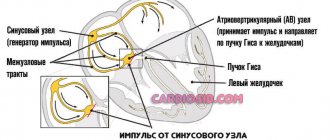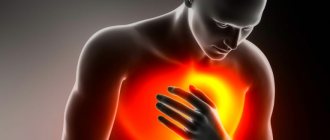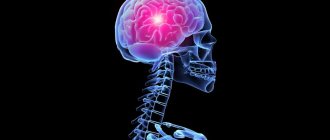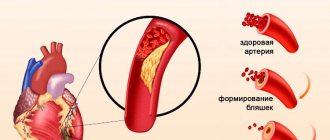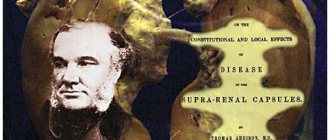| This article may require cleaning to meet Wikipedia's quality standards. |
| Cardiomegaly | |
| Cardiomegaly on chest x-ray with pacemaker | |
| Speciality | Cardiology |
| Types | Athletic heart syndrome, [1] ventricular hypertrophy, enlarged atria. |
| Causes | Dilated cardiomyopathy, [2] [3] [4] [5] Hypertrophic cardiomyopathy. [1] [6] [7] [8] [9] |
| Diagnostic method | Screening for hypertrophic cardiomyopathy [10] [11] |
Cardiomegaly
(sometimes
cardiomegaly
or
cardiomegaly
) is a medical condition in which the heart becomes enlarged.
As such, it is more commonly referred to simply as an " enlarged heart
".
Cardiomegaly is not a disease, but rather a condition that can result from many other diseases, such as obesity or coronary artery disease. Cardiomegaly can be serious: depending on which part of the heart is enlarged, the patient may suffer from heart failure. Recent studies suggest that cardiomegaly is associated with a higher risk of sudden cardiac death. [12] Heart failure increases with age and is more common in men and African Americans. According to a June 2019 study, half of people diagnosed with heart failure die within 5 years of diagnosis. [ citation needed
] Cardiomyopathy is also associated with cardiomegaly.
[ citation needed
]
The causes of cardiomegaly vary from patient to patient, depending on each case. This condition is often a consequence of high blood pressure (hypertension) or coronary artery disease. An enlarged heart may not pump blood efficiently, leading to congestive heart failure. Cardiomegaly may improve over time, but many people with an enlarged heart (dilated cardiomyopathy) require lifelong treatment with medications. [13] Having a first-degree relative with cardiomegaly may indicate that the person is more susceptible to this disease (congenital). [14]
Signs and symptoms[edit]
Many cardiomegaly is asymptomatic. According to others, if an enlarged heart begins to affect the body's ability to pump blood effectively, symptoms associated with congestive heart failure may occur, including: [14]
- Palpitations are irregular heartbeats usually associated with a problem with a valve inside the heart.
- Severe shortness of breath (especially during physical activity) is an intermittent inability to catch your breath.
- Chest pain
- Cough while lying down
- Fatigue
- Swelling of the legs
- Increased abdominal girth
- Weight gain
- Edema - swelling [15]
- Fainting [14]
Further information: Cardiogenic shock
These symptoms do not vary much because they are mainly confined to the chest area. However, some are more common than others, depending on each patient. [ citation needed
]
Characteristic manifestations of cardiomegaly
The disease has a hidden clinical picture. Its symptoms often coincide with those of other pathologies or are completely absent. Clear signs of violations will be:
- development of tachycardia;
- pain in the heart area;
- the appearance of shortness of breath;
- increased fatigue;
- swelling of the limbs;
- shortness of breath when lying down.
The disease is often diagnosed during a medical examination. If any of the above symptoms appear, visit a cardiologist.
Reasons [edit]
The causes of cardiomegaly are not fully understood, and many cases of cardiomegaly are idiopathic (without a known cause). Prevention of cardiomegaly begins with identification. If a person has a family history of cardiomegaly, they should tell their doctor so treatment can be prescribed to help prevent the condition from getting worse. In addition, prevention includes avoiding certain lifestyle risk factors, such as tobacco use, and controlling high cholesterol, high blood pressure and diabetes. Non-lifestyle risk factors include a family history of cardiomegaly, coronary artery disease (CHD), congenital heart failure, atherosclerotic disease, valvular heart disease, exposure to cardiac toxins, sleep-disordered breathing (eg, sleep apnea), persistent cardiac arrhythmias, abnormal electrocardiograms and cardiomegaly on chest x-ray. Lifestyle factors that can help prevent cardiomegaly include a healthy diet, blood pressure control, exercise, medications, and avoiding alcohol and cocaine. [14] Current research and evidence from previous cases link the following (below) as possible causes of cardiomegaly. [ citation needed
]
The most common causes of cardiomegaly are congenital (patients are born with a condition based on genetic inheritance), high blood pressure (which can enlarge the left ventricle, causing the heart muscle to weaken over time), and coronary heart disease: in the second case, the disease creates a blockage in the blood supply heart, which causes tissue to die, causing other areas of the heart to work harder, causing the heart to become larger. [ citation needed
]
Other possible causes include:
- Heart valve disease
- Cardiomyopathy (disease of the heart muscle)
- Pulmonary hypertension
- Pericardial effusion (fluid around the heart)
- Thyroid diseases
- Hemochromatosis (excess iron in the blood)
- Amyloidosis [14]
- Chagas disease, an important cause of cardiomegaly in Latin America [16]
- Viral heart infection
- Pregnancy in which an enlarged heart develops around the time of birth (perinatal cardiomyopathy).
- Kidney disease requiring dialysis
- Alcohol or cocaine abuse
- HIV infection [13]
- Diabetes [17]
How is cardiomegaly diagnosed?
A whole range of methods are used:
- a specialist examines the heart by palpation and listens to its work;
- computed tomography scan;
- The ultrasound method, which checks the morphological and functional changes of the heart and its valves (echocardiography), is the most reliable research method;
- electrocardiogram;
- chest x-ray;
- laboratory analysis of blood parameters;
- method of tissue biopsy of the cardiac ventricles.
A cardiologist can sometimes assume the presence of a disease only through a digital examination and listening to heartbeats. The organ will be enlarged and characteristic noises will be detected during its operation.
Mechanism[edit]
Cardiomegaly is a disease that affects the cardiovascular system, in particular the heart. This condition is closely related to congestive heart failure. [14] Inside the heart, the working fibers of myocardial tissue increase in size. As the heart works harder, actin and myosin filaments overlap less, increasing the size of myocardial fibers. If the sarcomeres have less overlap between the protein filaments of actin and myosin muscle fibers, they will not be able to effectively pull on each other. If the heart tissue (the walls of the left and right ventricles) becomes too large and stretches too far, these threads cannot effectively pull on each other, contracting the muscle fibers, thereby affecting the heart's thread sliding mechanism. If the fibers cannot shorten properly and the heart cannot contract properly, then blood cannot be efficiently pumped to the lungs for re-oxygenation and to the body to deliver oxygen to the working tissues of the body. [ citation needed
]
A person with an enlarged heart is more prone to developing blood clots in the lining of the heart. These clots can also form in other parts of the body. Once they enter the bloodstream, it becomes difficult for the organs to receive blood due to the blockage caused by the clots. It can also affect other systems in the body and lead to other problems. [ citation needed
]
Features of the disease in the fetus and children
Cardiomegaly in fetuses and children is rarely a single pathology. The condition is accompanied by a number of other dangerous disorders. Patients usually experience hypertrophy of the heart walls, due to which the organ is three times enlarged. Also, in infants who had an enlarged heart muscle during prenatal development, the following disorders are observed:
- the presence of blood clots of various sizes;
- dilated heart valve openings;
- cardiosclerotic foci.
In the case where a bull's heart was not detected in the fetus during examination (ultrasound), and this problem occurs in the baby after birth, it is most likely caused by trauma received during childbirth or asphyxia.
Diagnosis[edit]
There are many methods and tests used to diagnose an enlarged heart. The results of these tests can often be used to see how efficiently the heart is working, determine which chambers of the heart are enlarged, look for evidence of previous heart attacks, and determine whether a person has a congenital heart defect. [ citation needed
]
Risk factors for cardiomegaly include a family history of heart disease, diabetes, obesity, hypertension, a history of alcohol or drug abuse, and a lifestyle that consists of little or no exercise. [ citation needed
]
Cardiothoracic ratio = where: [18] MRD = greatest perpendicular diameter from the midline to the right border of the heart MLD = greatest perpendicular diameter from the midline to the left border of the heart ID = internal diameter of the chest at the level of the right hemidiaphragm M R D + MLD I D { \displaystyle {MRD+MLD \over ID))
- Chest X-ray
: X-rays help see the condition of the lungs and heart.
If the heart is enlarged on X-ray, other tests are usually needed to find the cause. A useful measurement on x-ray is the cardiothoracic ratio
, which is the transverse diameter of the heart compared to the diameter of the chest." [19] These diameters are taken from the chest radiograph using the widest point of the chest and measuring to the pleura of the lung rather than to the lateral edges of the skin. If the heart to chest ratio is greater than 50%, pathology is suspected, provided that the x-ray was taken correctly [20]. The measurement was first proposed in 1919 to screen recruits. A new approach to using these X-rays to assess heart health is based on the ratio of the area of the heart to the area of the chest and is called the two-dimensional cardiothoracic ratio. [21] - Electrocardiogram
: This test records the electrical activity of the heart through electrodes attached to a person's skin. The impulses are recorded as waves and displayed on a monitor or printed on paper. This test helps diagnose heart rhythm problems and assess damage to a person's heart from a heart attack. - Echocardiogram
: This test to diagnose and monitor an enlarged heart uses sound waves to create a video image of the heart. This test can evaluate the four chambers of the heart. - Stress test
: A stress test, also called an exercise stress test, provides information about how well the heart works during physical activity. Typically this involves walking on a treadmill or riding an exercise bike while monitoring your heart rate, blood pressure and breathing. - Cardiac computed tomography
(CT) or
magnetic resonance imaging
(MRI). During a CT scan of the heart, a person lies on a table inside a machine called a gantry. An X-ray tube inside the machine rotates around the body and collects images of the heart and chest. In cardiac MRI, a person lies on a table inside a long, tubular machine that uses a magnetic field and radio waves to create signals that create images of the heart. - Blood tests
tests
may be ordered to check levels of substances in the blood that may indicate heart problems. Blood tests can also help rule out other conditions that may be causing your symptoms.
Histopathology of (a) normal myocardium and (b) myocardial hypertrophy. The scale shows 50 µm. Weight of the heart compared to the body. [22]
- Cardiac catheterization and biopsy
: In this procedure, a thin tube (catheter) is inserted into the groin and advanced through the blood vessels to the heart, where a small sample (biopsy) of the heart, if indicated, can be taken for laboratory analysis. . [14] - In deceased individuals, cardiomegaly at autopsy
has been suggested when the heart weighs >399 grams in women and >449 grams in men. [23]
Classification [edit]
Cardiomegaly can be classified by the main area of the heart that is enlarged and/or by the pattern of enlargement.
There are also certain additional subtypes. For example, athlete's heart is a non-pathological condition often found in sports medicine in which the human heart is enlarged, and the resting heart rate is lower than normal.
By enlarged location[edit]
- Ventricular hypertrophy Left
- Right/pulmonary heart
- Left
Extension structure[edit]
Dilated cardiomyopathy is the most common type of cardiomegaly. In this condition, the walls of the left and/or right ventricles of the heart become thin and stretched. The result is an enlarged heart.
In other types of cardiomegaly, the large, muscular left ventricle of the heart becomes abnormally thick. Hypertrophy is usually the cause of left ventricular enlargement. Hypertrophic cardiomyopathy is usually an inherited disease.
Clinical picture
A “bull” heart does not appear in a person who plays sports or has a hypersthenic physique. Such an increase is not considered a pathology at all. If the development of the disease is provoked by other factors, then the clinical picture may be as follows:
general weakness;- fast fatiguability;
- shortness of breath after any physical activity and at night;
- attacks of tachycardia;
- abdominal growth due to the development of ascites;
- heaviness in the right side of the chest;
- protrusion of the neck veins;
- swelling of the lower extremities.
Symptoms mainly indicate heart failure. A complete examination will help to accurately diagnose and identify the cause of heart enlargement.
The congenital form of cardiomegaly is more difficult to detect in a timely manner due to the lack of opportunity to find out from the child what is bothering him. Parents need to pay attention to the following nuances:
- presence of shallow rapid breathing;
- pale skin color and blue discoloration around the lips;
- decreased appetite;
- the occurrence of edema;
- excessive sweating;
- tachycardia.
Treatment[edit]
Treatment for cardiomegaly involves a combination of medication and medical/surgical procedures. Below are some treatment options for people with cardiomegaly: [ citation needed
]
Medicines
- Diuretics:
To reduce the amount of sodium and water in the body, which can help lower pressure in the arteries and heart. - Angiotensin-converting enzyme (ACE) inhibitors
: to lower blood pressure and improve the pumping ability of the heart. - Angiotensin receptor blockers (ARBs):
to provide the benefits of ACE inhibitors to those who cannot take ACE inhibitors. - Beta blockers:
to lower blood pressure and improve heart function. - Digoxin:
Helps improve the pumping function of the heart and reduce the need for hospitalization for heart failure. - Anticoagulants:
To reduce the risk of blood clots, which can cause a heart attack or stroke. - Antiarrhythmic drugs:
to keep the heart beating at a normal rhythm.
Medical devices to regulate heartbeat
- Pacemaker:
Coordinates contractions between the left and right ventricles. For people at risk of serious arrhythmias, drug therapy or an implantable cardioverter defibrillator (ICD) may be used. - ICDs: Small devices implanted in the chest to continuously monitor the heart rhythm and deliver an electrical shock when needed to control abnormal, fast heartbeats. The devices can also work as pacemakers.
Surgical procedures
- Heart valve surgery:
If an enlarged heart is caused by a problem with one of the heart valves, surgery may be done to remove the valve and replace it with an artificial or tissue valve from a pig, cow, or deceased human donor. If blood leaks back through the valve (valve regurgitation), the leaking valve can be surgically repaired or replaced. - Coronary artery bypass surgery:
If the enlarged heart is due to coronary artery disease, coronary artery bypass surgery may be an option. - Left ventricular assist :
(LVAD): This implantable mechanical pump helps a weak heart rhythm. LVADs are often implanted when a patient is awaiting a heart transplant or, if the patient is not a candidate for a heart transplant, as a long-term treatment for heart failure. - Heart transplant:
If medications cannot control symptoms, a heart transplant is often the final option. [14]
Cardiomegaly can progress and complications often occur
:
- Heart failure
: One of the most serious types of enlarged heart, an enlarged left ventricle, increases the risk of heart failure. In heart failure, the heart muscle weakens and the ventricles stretch (dilate) to the point that the heart cannot pump blood effectively throughout the body. - Blood clots
: An enlarged heart can make a person more susceptible to developing blood clots in the lining of the heart. If clots enter the bloodstream, they can block blood flow to vital organs, even causing a heart attack or stroke. Clots that form on the right side of the heart can travel to the lungs, a dangerous condition called pulmonary embolism. - Heart murmurs
: In people with an enlarged heart, two of the four heart valves—the mitral and tricuspid valves—may not close properly because they dilate, causing blood to flow back. This flow creates sounds called heart murmurs. - The exact mortality rate of people with cardiomegaly is unknown. However, many people live with an enlarged heart for a very long time, and if detected early, treatment can help improve the condition and prolong the lives of these people. [14]
- For some people, cardiomegaly
is a temporary condition that may resolve on its own, returning to normal activities. Others may have permanent enlargement that will need to be addressed with the above treatments.
Lifestyle changes
- To give up smoking
- Limiting alcohol and caffeine consumption
- Maintaining a Healthy Weight
- Increasing the amount of fruits and vegetables in the daily diet
- Limiting consumption of foods high in fat and/or sugar
- Adequate restful sleep
Forecast
Congenital cardiomegaly does not have a good prognosis. Many children do not even live to see 3 months. Every second child recovers, but there is a chance that he will develop heart pathologies in the future.
Treatment for acquired bull's heart depends on the cause that triggered its development. In heart failure caused by dilated cardiomyopathy, cardiomegaly can progress to an advanced stage within 3 years, leading to disability or death. In other cases, the disease can develop without symptoms for decades if you change your lifestyle and follow all the doctor’s recommendations.
Cardiomegaly in adults develops due to the influence of various pathologies. The basis of treatment is lifestyle correction, elimination of the underlying pathological process and reducing the load on the heart. It is equally important to try to protect yourself as much as possible from irritating factors that can cause increased blood pressure, ischemia and lung disease. Drawing up a treatment regimen should be entrusted to a cardiologist, since self-medication can harm health and worsen heart failure.
Links[edit]
- ^ a b
"Enlarged Heart".
Canadian Heart and Stroke Foundation
. Retrieved March 29, 2021. Types... Hypertrophic cardiomyopathy, Left ventricular hypertrophy (LVH), Intense, prolonged sports training - Hershberger, Ray E; Morales, Ana; Siegfried, Jill D. (September 22, 2010). "Clinical and genetic issues in dilated cardiomyopathy: a review for geneticists". Genetics in Medicine
.
12
(11): 655–667. DOI: 10.1097/GIM.0b013e3181f2481f. PMC 3118426. PMID 20864896. - Luk, A; An, E; Soor, G.S.; Bhutani, J. (November 18, 2008). "Dilated cardiomyopathy: a review." Journal of Clinical Pathology
.
62
(3):219–225. DOI: 10.1136/jcp.2008.060731. PMID 19017683. S2CID 28182534. - “What is an enlarged heart (cardiomegaly)?” . WebMD
. 2019-01-30. Retrieved March 29, 2021. - Lee, Ji Eun; Oh, Jin-Hee; Lee, Jae-young; Ko, Dae Gyun (2014). "Massive cardiomegaly due to dilated cardiomyopathy causing bronchial obstruction in an infant". Journal of Cardiovascular Ultrasound
.
22
(2): 84–7. DOI: 10.4250/jcu.2014.22.2.84. PMC 4096670. PMID 25031799. - Marian, Ali J.; Braunwald, Eugene (September 15, 2021). "Hypertrophic cardiomyopathy". Circulation Research
.
121
(7):749–770. DOI: 10.1161/CIRCRESAHA.117.311059. PMC 5654557. PMID 28912181. - Jump up
↑ Maron, Martin S (February 1, 2012).
"Clinical value of cardiovascular magnetic resonance in hypertrophic cardiomyopathy". Journal of Cardiovascular Magnetic Resonance
.
14
(1): 13. DOI: 10.1186/1532-429X-14-13. PMC 3293092. PMID 22296938. - Almog, C; Weisberg, D; Herczeg, E; Paevsky, M. (February 1, 1977). "Thylipoma mimicking cardiomegaly: a clinicopathological rarity". Thorax
.
32
(1): 116–120. DOI: 10.1136/thx.32.1.116. PMC 470537. PMID 138960. - Hou, Jianglong; Kang, Y. James (September 2012). "Regression of pathological cardiac hypertrophy: signaling pathways and therapeutic targets". Pharmacology and therapy
.
135
(3):337–354. DOI: 10.1016/j.pharmthera.2012.06.006. PMC 3458709. PMID 22750195. - Luis Fuentes, Virginia; Wilkie, Lois J. (September 2021). "Asymptomatic hypertrophic cardiomyopathy" (PDF). Veterinary Clinics of North America: Small Animal Practices
.
47
(5):1041–1054. DOI: 10.1016/j.cvsm.2017.05.002. PMID 28662873. - Maron, Barry J; Maron, Martin S (January 2013). "Hypertrophic cardiomyopathy." Lancet
.
381
(9862):242–255. DOI: 10.1016/S0140-6736(12)60397-3. PMID 22874472. S2CID 38333896. - Tavora F; and others. (2012). “Cardiomegaly is a common arrhythmogenic substrate in adult sudden cardiac death and is associated with obesity.” Pathology
.
44
(3): 187–91. DOI: 10.1097/PAT.0b013e3283513f54. PMID 22406485. S2CID 25422195. - ^ a b
"What is an enlarged heart (cardiomegaly)?"
. WebMD
. - ^ a b c d e f g h i
“Enlarged heart - symptoms and causes.”
mayoclinic.org
. Retrieved March 19, 2021. - Mayo Clinic Staff (January 16, 2020). "Enlarged Heart". Mayo Clinic
. Retrieved May 12, 2021. - Bestetti, Reynaldo B. (November 2016). "Chagas heart failure in Latin American patients". Card Failure
Rev.
2
(2): 90–94. doi:10.15420/cfr.2016:14:2. PMC 5490952. PMID 28785459. - https://www.ddcmultimedia.com/doqit/Care_Management/CM_HeartFailure/L1P4.html [ permanent dead link
] - "Breast measurements". Oregon Health and Science University
. Retrieved January 13, 2021. - "cardiothoracic ratio". thefreedictionary.com
. Retrieved March 19, 2021. - Justin, M; Zaman, S; Sanders, J.; Crook, A. M.; Feder, G.; Shipley, M.; Timmis, A.; Hemingway, H. (April 1, 2007). "Cardiothoracic ratio within the 'normal' range independently predicts mortality in patients undergoing coronary angiography". Heart
.
93
(4):491–494. DOI: 10.1136/hrt.2006.101238. PMC 1861494. PMID 17164481. - Brown, Ronan FJ; O'Reilly, Geraldine; McInerney, David (18 February 2004). "Extracting two-dimensional cardiothoracic ratio from digital chest radiographs: correlation with cardiac function and traditional cardiothoracic ratio". Journal of Digital Imaging
.
17
(2): 120–123. DOI: 10.1007/s10278-003-1900-3. PMC 3043971. PMID 15188777. - Kumar, Nina Teresa; Liestøl, Knut; Löberg, Else Marit; Reims, Henrik Mikael; Mæhlen, Jan (2014). "Post-mortem heart weight: association with body size and outcomes of cardiovascular disease and cancer." Cardiovascular pathology
.
23
(1): 5–11. DOI: 10.1016/j.carpath.2013.09.001. ISSN 1054-8807. PMID 24121021. - Tracy, Richard Everett (2011). "Association of cardiomegaly with coronary artery histopathology and its relationship with atheroma". Journal of Atherosclerosis and Thrombosis
.
18
(1): 32–41. DOI: 10.5551/jat.5090. PMID 20953090.
How the heart enlarges
Despite the abundance of reasons that cause the development of cardiac pathology, the formation of a “bull’s heart” occurs according to one of the scenarios.
- The first way. The provoking factor is hypertension. Pathological changes in the tissues of the valves result in hemodynamic failure. As a result of increased resistance of the vessel walls, blood cannot move freely in the desired direction. This leads to an increase in the strength of heart contractions and the growth of muscle fibers, which ultimately ends in hypertrophy. Progressive changes spread throughout all chambers, triggering the development of cardiomegaly.
- Second way. The syndrome is provoked by signs of myocarditis or cardiomyopathy. Due to ongoing tissue inflammation (myocarditis) or abnormal size and volume of the myocardium (cardiomyopathy), the heart muscle undergoes thickening. Over time, all organ cavities are involved in the pathological process, the structures of which suffer from intoxication. The result is the appearance of hypertrophic changes, which cause cardiomegaly.
The formation of a large mass of the main organ in an adult occurs under the influence of various types of pathologies. If you do not begin timely treatment of the problem, its progress threatens total hypertrophy.
Further reading[edit]
- Amin, Hina; Siddiqui, Waqas J. (2019). "Cardiomegaly". StatPearls
. StatPearls Publishing. - Ampanosi, Garifalia; Krinke, Eileen; Laberke, Patrick; Schweitzer, Wolf; Tali, Michael J.; Ebert, Lars K. (September 1, 2021). "Comparing fist size and heart size is not an appropriate method for assessing cardiomegaly." Cardiovascular pathology
.
36
: 1–5. DOI: 10.1016/j.carpath.2018.04.009. PMID 29859507. - Agostoni, Pier Giuseppe; Cattadori, Gaia; Guazzi, Marco; Palermo, Pietro; Bussotti, Maurizio; Marenzi, Giancarlo (November 1, 2000). "Cardiomegaly as a possible cause of pulmonary dysfunction in patients with heart failure." American Heart Journal
.
140
(5):A17–A21. DOI: 10.1067/mhj.2000.110282. PMID 11054632. - Ludde, Mark; Catus, Hugo; Frey, Norbert (1 January 2006). "New molecular targets in the treatment of cardiac hypertrophy." Latest Patents for Cardiovascular Drug Discovery
.
1
(1): 1–20. DOI: 10.2174/157489006775244290. PMID 18221071.
General information about pathology
Cardiomegaly is often called a “bull” heart due to a noticeable increase in the shape and size of the organ, the mass of which is constantly growing.
In medical practice, pathology is not considered an independent disease, but it develops against the background of existing malfunctions in the functioning of the heart muscle. According to WHO, the frequency of diagnosis of heart disease is 3-10 recorded cases per 100 thousand patients.
The main danger of cardiomegaly is associated with disruption of the normal mode of pumping blood through the vessels due to the expansion of the chambers. As a result, organs and tissues suffer from a lack of nutrients, and the heart rhythm is disrupted, provoked by oxygen starvation.
In addition, the risk of thrombosis increases, which can result in death, especially if the left ventricle is hypertrophied.
Doctors detect a dangerous pathology in a standard X-ray image taken in two projections - frontal and lateral. An X-ray shows an increase in the volume of all organ cavities; in some cases, the volume of the ventricles or atria can stretch more than 2 times.
Pathological changes are accompanied by signs of hypertrophy and thickening of muscle structures.
The consequence of myocardial transformation is impaired functional ability, the appearance and progression of heart failure. Using an x-ray, the doctor also has the opportunity to assess the condition of the pulmonary vessels, diagnose pulmonary hypertension, heart disease (congenital), and the degree of damage to the valve structure.
A false diagnosis of cardiomegaly cannot be ruled out. The reason may be due to mediastinal overlays (pericardial cyst), creating the illusion of an enlarged organ or its parts.
